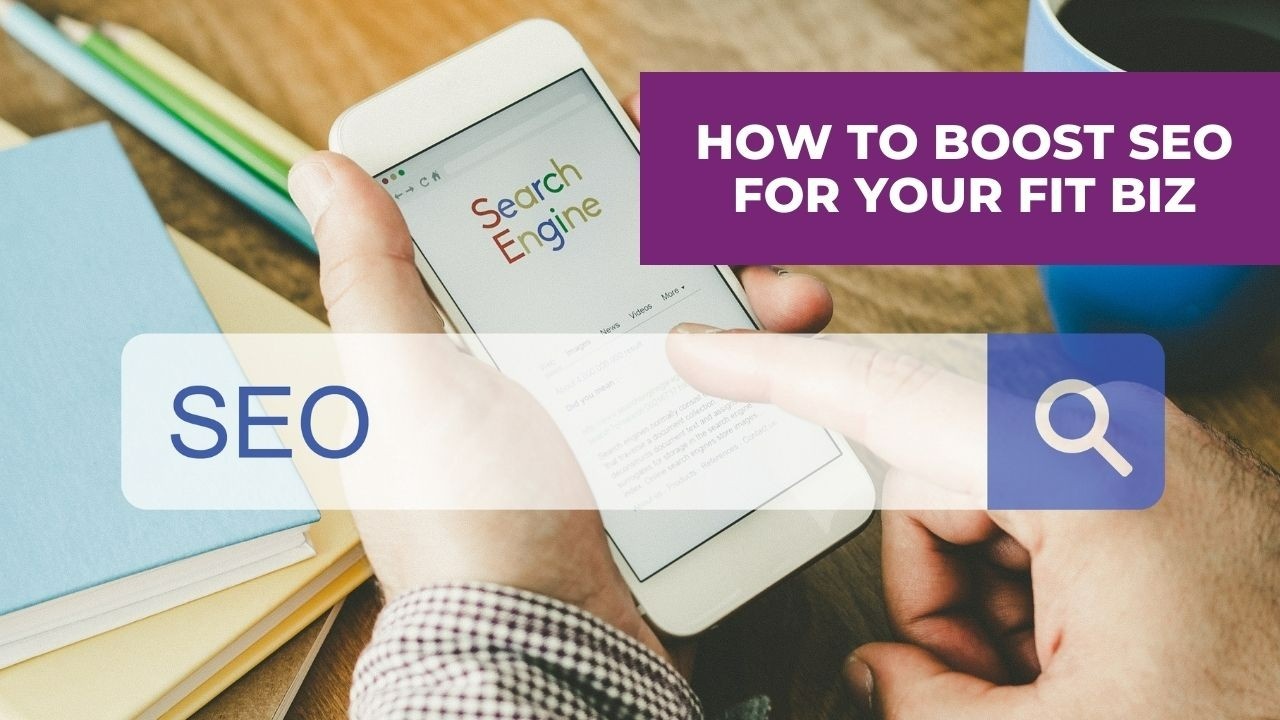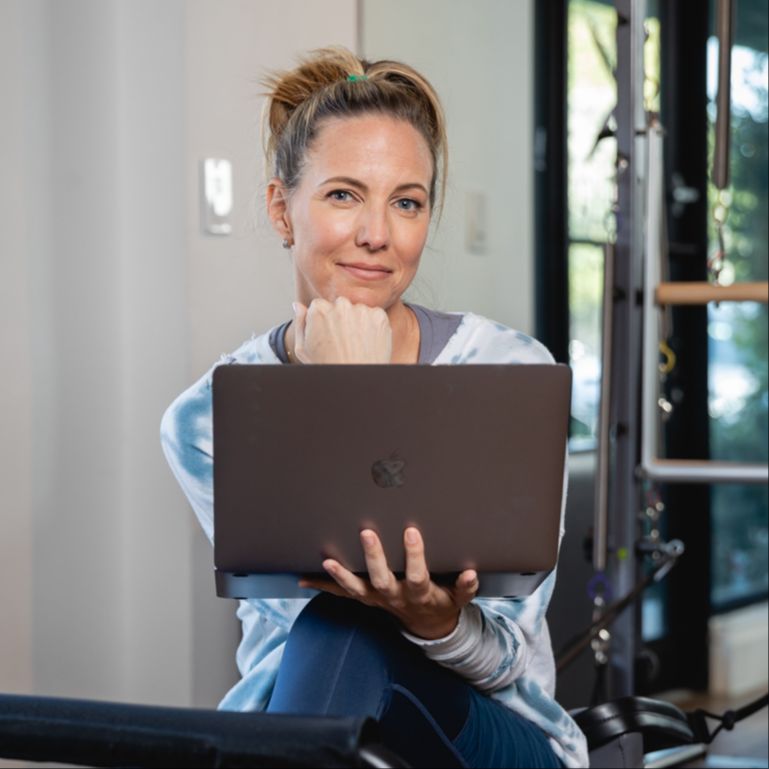How to Boost SEO for Your Fit Biz
Jul 11, 2021
You have put a lot of time and energy (and maybe even money) into your website. It’s full of thoughtful content and easy booking options that people should love, but there’s one thing missing: nobody’s finding your site. Does this sound like you?
We already know that your business is solid, but you need your new customers to know that, too. In order to do that, they have to find you first. To do that, you need a strategy to cut through the crowds and get those internet eyes on you first. You need to boost SEO, but how?
Those three letters are the most exciting — and most frustrating — part of marketing your business. (If you’re totally new to this, SEO means “search engine optimization.”) If you’re new on the scene, or you’ve hit a plateau lately, the thought of trying to hoodwink Google to show your website higher in search can sound intimidating.
The good news? SEO isn’t just for businesses with a large marketing team. It’s for the small Pilates studio, yoga teacher, or even virtual scolio PT. You don’t need a marketing degree or years of experience. You just need a few simple steps, and the determination to make SEO work for you.
Why you need to boost SEO
The biggest question that most of us ask when we want to get more clients is: How do I get more people onto my site or into my studio? The answer: get ranked higher on Google. Everyone is after those elusive top spots on the first page of search results and in Google Maps — and for good reason. According to Latasha Doyle, 91% of searchers don’t scroll past page one!
Search engine optimization is a huge deal because it decides your brand’s visibility. SEO is ultimately how search engines like Google and Bing connect your site with how people are searching. By optimizing your content, the “crawl bots” can find and highlight it more easily.
To rank higher, you need to take advantage of the algorithm that the search engines have in place. The actual algorithms are complicated and differ slightly from platform to platform, but one thing stays the same: writing optimized content is absolutely essential for success.
7 simple SEO tips to get started
If you’re just starting out, SEO can seem like a huge undertaking. You don’t need to jump down the rabbit hole right away (in fact, I highly recommend that you don’t, so that you don’t get overwhelmed).
Your first move should be to download my helpful SEO checklist that I created with my copywriter, Latasha Doyle, so that you can track your progress. Once you’ve done that, you are ready to get started! Here are seven tried-and-true SEO steps that all business owners can do right now.
Claim your business location on Google My Business
Claiming your business on Google My Business may not have been your first instinct, but this is one of the best ways to get seen online. (You should be doing this before anything else!)
By going through “Google My Business” and registering your information, anyone who looks up key terms in your area will see you come up as an option in the sidebar. This is super simple to set up, and it pays dividends all the way down the line. For example, over at Pilates in the Grove, we’ve claimed our GMB listing and rank for searches like “Pilates Miami” or “Pilates studio in South Miami.”
Update your website’s main page meta data
Once you have claimed your business on Google My Business, turn your attention to the main pages of your website. If you could wave a wand and ensure that people saw one or two pages from your website in their search results, which pages would you choose? (These will generally be your home page, “about me” page, or services).
Focus on making these pages as optimized as possible. You can do this by updating the meta title and metadata of each page to include relevant keywords and phrases. Make sure your header and first paragraph feature your keywords as well — our checklist also helps you make sure you’re not leaving anything out! This way, you choose the search terms that Google pulls from your page. Otherwise, the algorithm will choose at random.
It can be tempting to apply the same metadata for all of your pages, but this actually works against you. Don’t “self-cannibalize” by painting yourself into an SEO corner. Instead, customize each page with its own unique metadata to broaden your reach as much as possible. Some sites like WordPress and Wix have add-ons that help identify this for you, so make sure to take advantage of all the resources at your disposal!
This step may not be the most fun, but it is absolutely essential. Before you even get to the “actual” content on your site (like blogs), make your meta data (including the meta title, meta description, and H1) as optimized as possible. This will spearhead the process and give that other content a head start later on.
Choose blog topics intentionally
Blogs are a great tool for boosting your SEO, but they can easily be overwhelming. Don’t let your blog become just one more thing that you have to do. Contrary to popular belief, you don’t need mountains of content to start out. In fact, you can start out writing one blog a month, as long as you make every word count.
How do you do that? You have to choose blog topics intentionally based on what people search — not solely on your interests or experience. This may seem odd at first (after all, you should absolutely write about what you know), but by tailoring your topics to what your audience wants to know in your field, complete strangers are more likely to hear what you have to say.
Educational content is a great way to start if you want to build your audience. That way, you can establish yourself as an expert in your field, and this lends more credibility to your personal content in the future. For example, we often create content around specific injuries and how Pilates can help. Things like “How Pilates Can Help a Back Injury” includes the keyword “back injury,” but also tell people the solution.
Use alt text
In this case, a photo doesn’t have to say a thousand words — just a few carefully chosen ones.
Photo alt text is becoming more important as it helps with your website’s accessibility. You can add alt text by entering your media library on your site and expanding the fields. The actual keywords are rather simple: you want to accurately describe what is in the photo, which means that you want to select photos that are relevant to your topic. Then, when prospective readers search those terms under Google Images, your image can pop up among the top listings and capture their attention.
For example, if you just choose a bunch of people walking in a crowd, you’d have to say “dozens of people walking in a crowd in a city.” But if you use a picture from your studio about a specific service, you can say “Pilates in the Grove physical therapy session.” Make sense?
Find related searches
There are lots of handy SEO keyword research tools, but honestly, there is no replacement for simply Googling yourself. (Yes, really.)
One of the best things you can do is check related searches to curate content ideas and see what is trending. Don’t worry if someone else uses the same title that you want to use — that actually works to your advantage. If your content is better, you win!
A word to the wise: do these searches in an incognito tab! Otherwise, the algorithm will do what it is programmed to do and show you more and more of the same thing, which will skew your results.
While doing these searches, keep in mind how SEO has changed recently. The focus has shifted from using a barrage of keywords to using “native language,” or more simply, how people talk. (People are more likely to ask Siri “Where is the closest barber,” not “Barber in Santa Anna”). The best featured snippets have conversational content that is optimized to the teeth.
If you need some direction, Answerthepublic.com is a great website for finding key phrase “ecosystems.” This gives you more options, and may even inspire the direction you want to go.
Stay patient
SEO is a great tool, but it is not magic. Your progress will likely be slow at first, so take heart, and try not to get discouraged. It can take up to 9 months to reach the first page when consistently applying these tactics.
Tracking your progress can be great for motivation. Search for yourself under your desired keyword and take a screenshot of where you are on the list (even if that is page 200!). Then you optimize, repost, and repeat. You should see yourself start to rise the more that you hone your skills.
It’s cliche, but slowly and steady wins the race (or in this case, wins Google). Keep refining, keep researching, and keep your eye on the prize. Download our helpful SEO checklist and unleash your business’s true potential. If you start now, you’ll be thrilled with the results down the road.
Lorem ipsum dolor sit amet, consectetur adipiscing elit. Cras sed sapien quam. Sed dapibus est id enim facilisis, at posuere turpis adipiscing. Quisque sit amet dui dui.
Stay connected with news and updates!
Join our mailing list to receive the latest news and updates from our team.
Don't worry, your information will not be shared.
We hate SPAM. We will never sell your information, for any reason.


